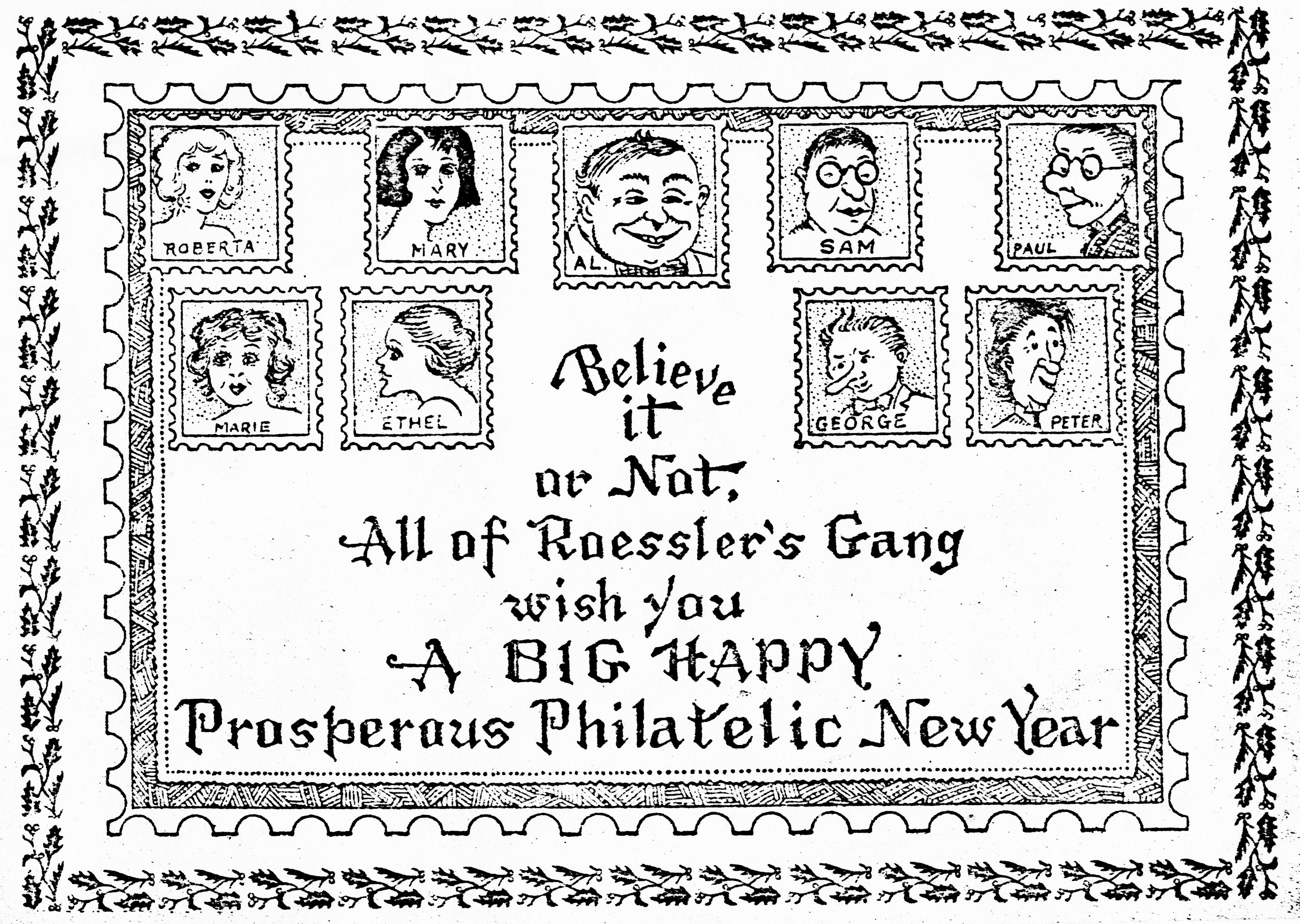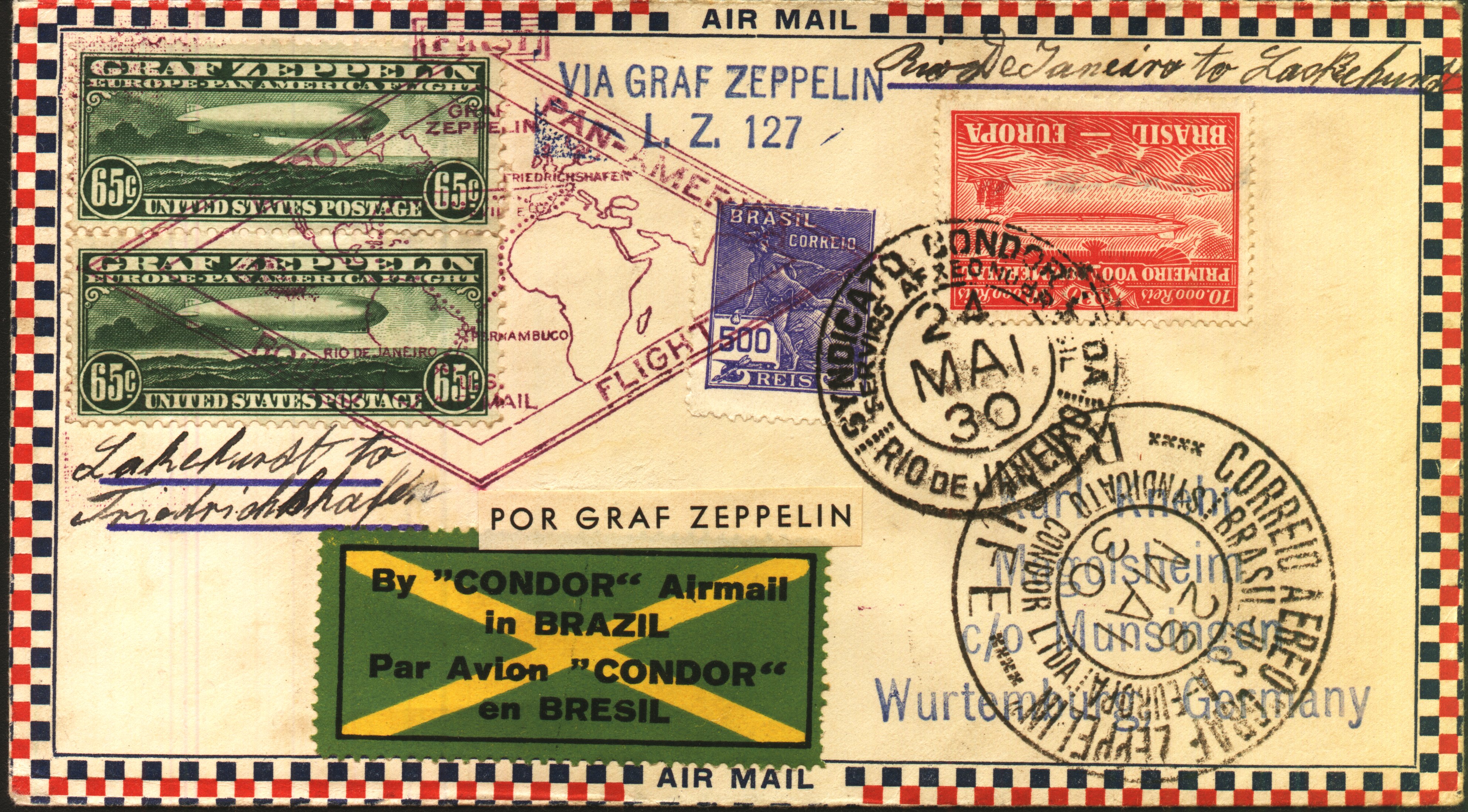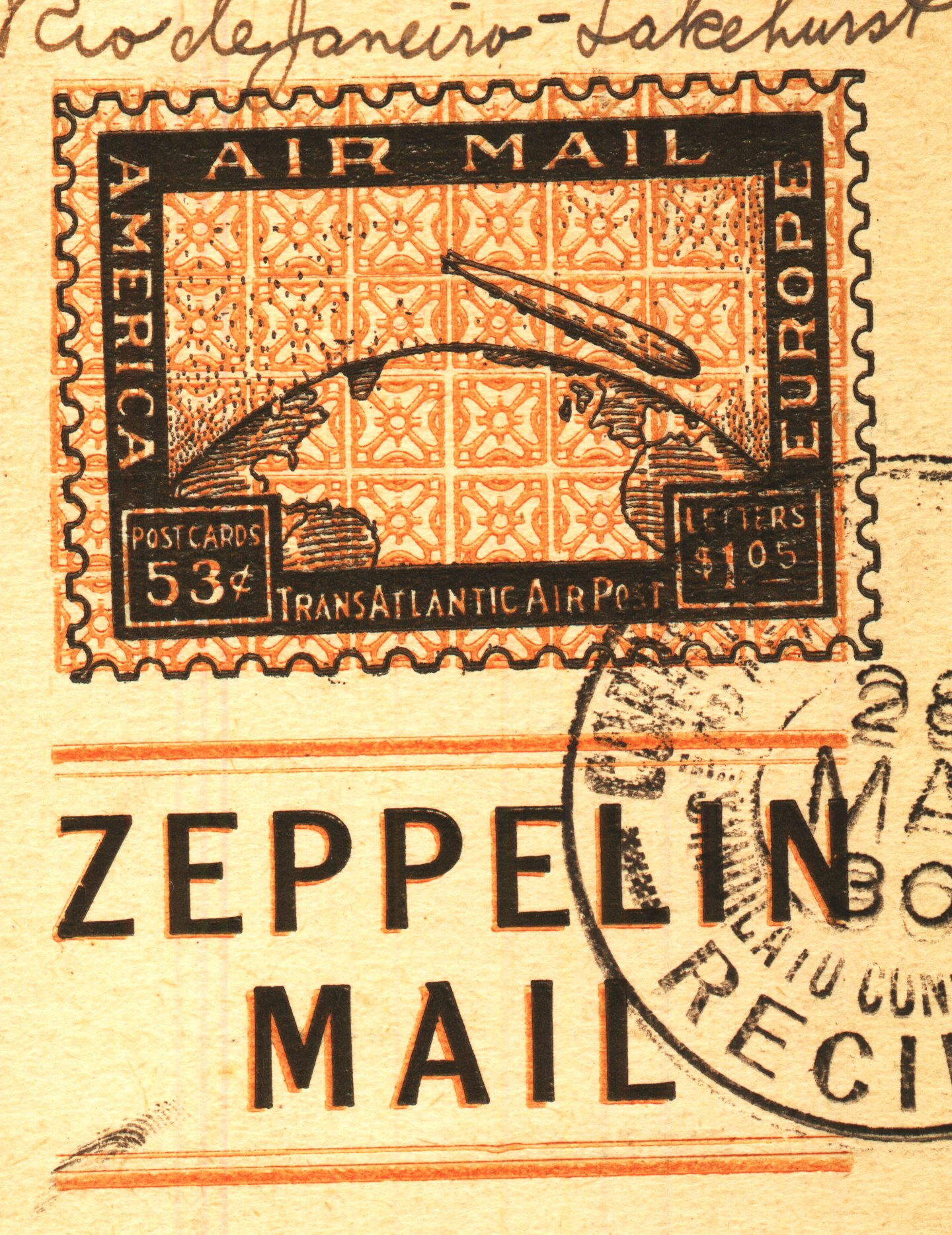
|
© Dr. Artur Knoth |
|
Brazilian Philately: The Pan Am Zeppelin Flight of 1930 |
Dealers: The Roessler Covers on the 1930 Pan Am Flight
I. Introduction
A lot has been written about this famous dealer, who seems to have bent if not outright broken the rules in his time. But this segment is not meant as an overview of the man himself, other authors have done a much better job of that already, but as a collection of the envelopes and cards produced by him and used on this flight. The items displayed here either come from my own collection and/or were seen at auctions, e. g. Ebay. Here I would like to thank Bob Wilcsek for providing some information as well as xerox copies of a section of the Newman Catalog /1/. This is a “work in progress”, should any reader of this site find in his/her collection, a type not mentioned here, please notify me, and it will be included in this listing. But right here at the beginning, I would like to share with the readers a copy of a document I received from K-H Wittig out the Ahrens archives. This New Year's Greeting demonstrates vividly that the “Roessler Operation” had quite a few employees, a fact that will be important in the last section dealing with handwritings found on some covers.
II. “Plain” Envelopes
Roessler not only created his own covers, but at times supplied other dealers ( see Newark Stamp/Bernet) and collectors with stationary too. One sees examples of his “framed” air mail envelopes used on this flight. Fig. 1 and 2 demonstrate that this type of envelope came from Roessler. The Fig. 3 displays such a cover, sent to Germany but without any cachet on it.
 Figure 3: Non-cacheted cover to Germany
Figure 3: Non-cacheted cover to Germany
III. Liberty - Zeppelin Mail
The main type is the same as in Newman's ROE-FZ1, but there are new variations, a collection of which is represented by Figures 4 through 6. The colors, especially of the backgrounds, vary greatly and are difficult to reproduce here accurately.
One interesting factoid, is that on very many of these “Liberty” covers, whether addressed directly to Roe or some of customers and/or name proxies, on the back you'll find a rubber-stamped return address as shown in Figure 7.
![]() Figure
7: Diagonally placed Roessler address on cover´s reverse.
Figure
7: Diagonally placed Roessler address on cover´s reverse.
IV. Eckener – Zeppelin Mail
Just as in the previous section, these versions are similar to ROE-F27, but again diverge in many aspects from that in Newman's work. Again there are three version, at least until now, known. The first, displayed in Figure 8, is a somewhat noteworthy postal card that seems to have a very strong under-printing.
But besides this postal card version, as in the Liberty case, two further versions, one for postal cards and another for envelopes, also are present in the Eckener case.
V. The Yellow Zeppelins
Then there's a set of cards and envelopes, in yellow that are very reminiscent of Newman's ROE-FZ10. Examples of both are in Figures 11 and 12.
While the envelope stock is very sturdy, the material used for the postal cards could almost be considered heavy cardboard stock.
VI. Oldies Recycled
One also sees examples of ROE-FZ6 being used on this flight. As Fig. 13 demonstrates, the card was intended for the 1929 Round-the-World (RTW) flight leg that would have been 53¢ instead of the 65 on this flight.
 Figure 13: Use of previous flight cacheted card.
Figure 13: Use of previous flight cacheted card.
VII. The Newark Stamp/Bernet – Roessler Connection
When one looks at the ROE-FZ12 in the catalog, which has a picture of the Zeppelin on the right of the envelope, underneath where the stamps would normally go, and notices that the inscription above the Zeppelin refers to the “Hindenburg”. That Zeppelin didn't exist yet in 1930. But consider the Figures 14 and 15.
But whereas ROE-FZ12 has the inscription above the Zeppelin “First Europe – America Hindenburg Flight”, these much earlier versions have “First Europe – Pan America Zeppelin Flight”(Fig. 16)
![]() Figure 16: Pan Am of later
Hindenburg ROE-FZ12
Figure 16: Pan Am of later
Hindenburg ROE-FZ12
For more details about this aspect, go to the segment Newark Stamp Co./Bernet Family in this same general section.
VIII. The Many Handwritings of Roessler
When one makes a comparison of the handwritten addresses one finds on Roessler covers, one notices that many hands were at work in this case. As a concrete example, consider the addressee A(l) C. Roe(ssler). Below one can discern at least three different people at work.
This last version seems to be the source of many other embellishments, such as Parachutes and Lady Drummond.
To be continued.
References:
/1/ Barry Newman: A.C. Roessler Photo Cachet Catalog